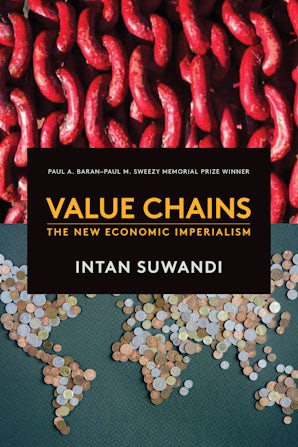Also in this issue
- Late Imperialism: Fifty Years After Harry Magdoff's The Age of Imperialism
- Neoliberal Capitalism at a Dead End
- The New Imperialist Structure
- Imperialism in the Anthropocene
- The Preemptive Counterrevolution and the Rise of the Far Right in Brazil
- Contemporary Challenges for the Working Class and Peasantry in Brazil
- Toward the Formation of a Transnational Alliance of Working and Oppressed Peoples
- A Note on the Communist Manifesto
Books by Intan Suwandi
Value Chains
by Intan Suwandi
Article by Intan Suwandi
- COVID-19 and Catastrophe Capitalism: Commodity Chains and Ecological-Epidemiological-Economic Crises
- The Case for Labor-Led Development
- Global Commodity Chains and the New Imperialism
- Multinational Corporations and the Globalization of Monopoly Capital: From the 1960s to the Present
- No Reconciliation without Truth: An Interview with Tan Swie Ling on the 1965 Mass Killings in Indonesia
- Behind the Veil of Globalization


